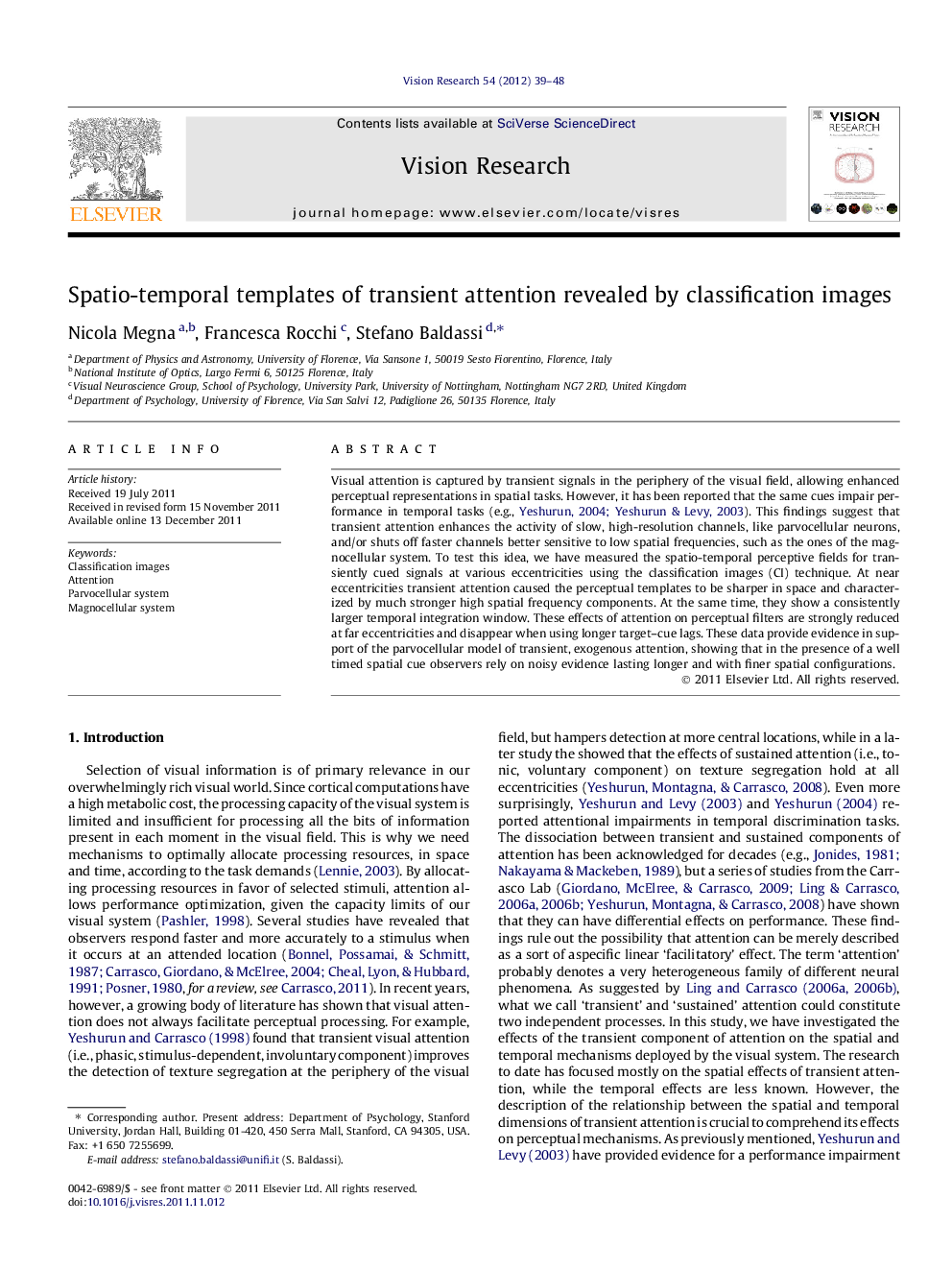| Article ID | Journal | Published Year | Pages | File Type |
|---|---|---|---|---|
| 6203729 | Vision Research | 2012 | 10 Pages |
Visual attention is captured by transient signals in the periphery of the visual field, allowing enhanced perceptual representations in spatial tasks. However, it has been reported that the same cues impair performance in temporal tasks (e.g., Yeshurun, 2004; Yeshurun & Levy, 2003). This findings suggest that transient attention enhances the activity of slow, high-resolution channels, like parvocellular neurons, and/or shuts off faster channels better sensitive to low spatial frequencies, such as the ones of the magnocellular system. To test this idea, we have measured the spatio-temporal perceptive fields for transiently cued signals at various eccentricities using the classification images (CI) technique. At near eccentricities transient attention caused the perceptual templates to be sharper in space and characterized by much stronger high spatial frequency components. At the same time, they show a consistently larger temporal integration window. These effects of attention on perceptual filters are strongly reduced at far eccentricities and disappear when using longer target-cue lags. These data provide evidence in support of the parvocellular model of transient, exogenous attention, showing that in the presence of a well timed spatial cue observers rely on noisy evidence lasting longer and with finer spatial configurations.
⺠We measured spatio-temporal perceptive fields using classification image. ⺠A transient cue flashed right before the signal perturbs the templates. ⺠The temporal integration window is larger with a cue. ⺠The spatial content biases towards high-frequencies with a cue. ⺠The data support the parvocellular theory of transient attention.
